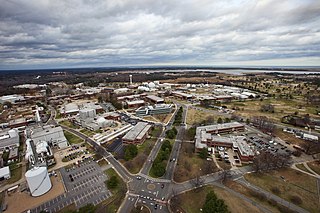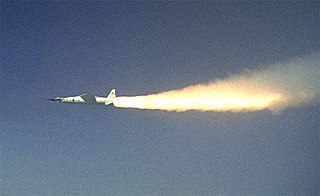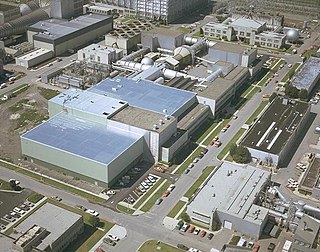Clarence Syvertson | |
|---|---|
 | |
| Born | 1926 |
| Died | 2010 (aged 83–84) |
Clarence A. "Sy" Syvertson (1926-2010) was the Center Director of the Ames Research Center of the National Aeronautics and Space Administration, located at Moffett Field, California.
Clarence Syvertson | |
|---|---|
 | |
| Born | 1926 |
| Died | 2010 (aged 83–84) |
Clarence A. "Sy" Syvertson (1926-2010) was the Center Director of the Ames Research Center of the National Aeronautics and Space Administration, located at Moffett Field, California.
Syvertson was born in Minneapolis, Minnesota in 1926. He graduated from the University of Minnesota with a Bachelor of Aeronautical Engineering (with Distinction) in 1946 at age 20. After serving in the US Army in 1946 - 1947, he returned to the University and earned a Master of Science in the same field in 1948. He also did graduate work at Stanford University and the Harvard Business School. He is a member of the National Academy of Engineering, a Fellow of the American Institute of Aeronautics and Astronautics, of the American Astronautical Society, and of the California Council on Science and Technology (emeritus), a member of Tau Beta Pi and Tau Omega honorary societies.
In 1948, Syvertson joined Ames, then known as the Ames Aeronautical Laboratory of the National Advisory Committee for Aeronautics (N.A.C.A.). For the first decade he was engaged in aerodynamic research in the high supersonic and hypersonic speed ranges. His research led to some significant results including the design of the first lifting body entry vehicle, the NASA M2-F1, a research precursor to the Space Shuttle. Earlier work included development of the aerodynamic concept on which a Mach 3 experimental bomber, the XB-70 Valkyrie, was based. Only two XB-70s were ever built; one was lost in a mid-air collision and the other is now in the Air Force museum at Wright-Patterson Air Force Base in Dayton, Ohio. The potential threat of a force of Mach-3 Bombers led the Soviets to build an expensive defense system.
Syvertson also developed a new aerodynamic theory widely used to predict the stability of slender vehicles flying at Mach numbers from 3 to 6 including missiles and small launch vehicles, such as the Aerobee-Hi. Early in his career at Ames he also developed new methods for the design of nozzle contours for supersonic wind tunnels. These methods improved, significantly, the quality of flow in supersonic wind tunnels and were used to design the nozzle contours for most of the supersonic wind tunnels at Ames as well as many at other institutions. Syvertson's research contributions are contained in more than 30 technical reports which he authored or co-authored during this period. For his research, he received, in 1957, the Lawrence Sperry Award, which is given by the American Institute of Aeronautics and Astronautics to the outstanding young man in aeronautics.
In the late 1950s, Syvertson moved into management when he became responsible for the aerodynamic design and initial operation of the Ames 3.5-foot (1.1 m) Hypersonic Wind Tunnel which provides a test environment for vehicles traveling at Mach numbers from 5 to 14. After successfully completing this assignment, he established, staffed, and directed the Mission Analysis Division, a small "think-tank" organization created to study the research requirements of advanced aircraft and spacecraft and of missions of future interest to NASA. In this position, Syvertson first reported to Ames and later to NASA Headquarters. From this position, he went on to head the Astronautics Directorate at Ames, directing research in space physics, planetary atmospheres, entry aerothermodynamics, and hypersonic aerodynamics. He also had management responsibility for an advanced magnetometer experiment carried to the surface of the Moon on an early Apollo program mission. In 1969, he was named Deputy Director of Ames with primary responsibility for institutional management of the Center. As Deputy Director, Syvertson supervised the development of many of the management and budgeting systems used by Ames today; some of these systems have been adopted by other NASA centers.
In 1970, Syvertson was asked to serve as the Executive Director of the Civil Aviation Research and Development (CARD) Policy Study. The resulting CARD report was considered a milestone in national policy for civil aviation research and development. For his efforts, Syvertson was awarded the NASA Exceptional Service Medal.
In 1978, Syvertson was named Director of Ames, a post he held until his retirement in 1984. During this period Ames developed and flew the XV-15 Tilt Rotor Research Aircraft, research precursor to the V-22 Osprey. It expanded its research program in Human Factors and developed a related facility, the Manned Vehicle Systems Research Facility. The 40- by 80-foot (24 m) Wind Tunnel was modified with a new 80- by 120-foot (37 m) test chamber added, making the facility the largest wind tunnel in the world. During Syvertson's tenure, the center developed the telescope for the highly successful Infrared Astronomical Satellite (IRAS), a joint project of the Netherlands, Great Britain, and the United States. Ames also provided comprehensive test support for the development of the Space Shuttle. In 1981, NASA's Dryden Flight Research Center at Edwards Air Force Base in the Mojave desert was merged with Ames and Syvertson assumed management responsibility for both Ames Moffett and Ames Dryden. Syvertson received many awards for his leadership of Ames including the NASA Distinguished Service Medal, NASA's highest award, and election in 1981 to the National Academy of Engineering. [1] In addition, the Regents of the University of Minnesota voted in 2003 to grant Syvertson the University's highest award, the honorary degree of Doctor of Science.
Syvertson died on September 13, 2010. [2]

The Ames Research Center (ARC), also known as NASA Ames, is a major NASA research center at Moffett Federal Airfield in California's Silicon Valley. It was founded in 1939 as the second National Advisory Committee for Aeronautics (NACA) laboratory. That agency was dissolved and its assets and personnel transferred to the newly created National Aeronautics and Space Administration (NASA) on October 1, 1958. NASA Ames is named in honor of Joseph Sweetman Ames, a physicist and one of the founding members of NACA. At last estimate NASA Ames had over US$3 billion in capital equipment, 2,300 research personnel and a US$860 million annual budget.

In aerodynamics, a hypersonic speed is one that exceeds five times the speed of sound, often stated as starting at speeds of Mach 5 and above.

The National Advisory Committee for Aeronautics (NACA) was a United States federal agency that was founded on March 3, 1915, to undertake, promote, and institutionalize aeronautical research. On October 1, 1958, the agency was dissolved and its assets and personnel were transferred to the newly created National Aeronautics and Space Administration (NASA). NACA is an initialism, i.e., pronounced as individual letters, rather than as a whole word.

The NASA Neil A. Armstrong Flight Research Center (AFRC) is an aeronautical research center operated by NASA. Its primary campus is located inside Edwards Air Force Base in California and is considered NASA's premier site for aeronautical research. AFRC operates some of the most advanced aircraft in the world and is known for many aviation firsts, including supporting the first crewed airplane to exceed the speed of sound in level flight, highest speed by a crewed, powered aircraft, the first pure digital fly-by-wire aircraft, and many others. AFRC operates a second site next to Air Force Plant 42 in Palmdale, California, known as Building 703, once the former Rockwell International/North American Aviation production facility. There, AFRC houses and operates several of NASA's Science Mission Directorate aircraft including SOFIA, a DC-8 Flying Laboratory, a Gulfstream C-20A UAVSAR and ER-2 High Altitude Platform. As of 2023, Bradley Flick is the center's director.

The Langley Research Center, located in Hampton, Virginia near the Chesapeake Bay front of Langley Air Force Base, is the oldest of NASA's field centers. LaRC has focused primarily on aeronautical research but has also tested space hardware such as the Apollo Lunar Module. In addition, many of the earliest high-profile space missions were planned and designed on-site. Langley was also considered a potential site for NASA's Manned Spacecraft Center prior to the eventual selection of Houston, Texas.

The NASA X-43 was an experimental unmanned hypersonic aircraft with multiple planned scale variations meant to test various aspects of hypersonic flight. It was part of the X-plane series and specifically of NASA's Hyper-X program developed in the late 1990s. It set several airspeed records for jet aircraft. The X-43 is the fastest jet-powered aircraft on record at approximately Mach 9.6.

Robert T. Jones,, was an American aerodynamicist and aeronautical engineer for NACA and later NASA. He was known at NASA as "one of the premier aeronautical engineers of the twentieth century".

Alfred J. Eggers, Jr. was NASA's Assistant Administrator for Policy. He devoted efforts to determine the influence of aviation technology in world peace and lectured widely.

An oblique wing is a variable geometry wing concept. On an aircraft so equipped, the wing is designed to rotate on center pivot, so that one tip is swept forward while the opposite tip is swept aft. By changing its sweep angle in this way, drag can be reduced at high speed without sacrificing low speed performance. This is a variation on the classic swing-wing design, intended to simplify construction and retain the center of gravity as the sweep angle is changed.
Scramjet programs refers to research and testing programs for the development of supersonic combustion ramjets, known as scramjets. This list provides a short overview of national and international collaborations, and civilian and military programs. The USA, Russia, India, and China (2014), have succeeded at developing scramjet technologies.

Paul F. Bikle was director of the U.S. National Aeronautics and Space Administration (NASA) Dryden Flight Research Facility from 1959 until 1971, and author of more than 40 technical publications. He was associated with major aeronautical research programs including the hypersonic X-15 rocket plane, and was a world record-setting glider pilot.

The Unitary Plan Wind Tunnel, located at the NASA Ames Research Center in Moffett Federal Airfield, Mountain View, California, United States, is a research facility used extensively to design and test new generations of aircraft, both commercial and military, as well as NASA space vehicles, including the Space Shuttle. The facility was completed in 1955 and is one of five facilities created after the 1949 Unitary Plan Act supporting aeronautics research.
The University of Texas at Arlington Aerodynamics Research Center (ARC) is a facility located in the southeast portion of the campus operated under the Department of Mechanical and Aerospace Engineering. It was established in 1986 as part of an expansion of UTA's College of Engineering. The ARC contributes to the vision of UTA and the University of Texas System to transform the university into a full-fledged research institution. It showcases the aerodynamics research activities at UTA and, in its history, has established itself as a unique facility at a university level. The wind tunnels and equipment in the facility were mainly built by scouting for and upgrading decommissioned equipment from the government and industry. Currently, Masters and Ph.D. students perform research in the fields of high-speed gas dynamics, propulsion, and Computational fluid dynamics among other projects related to aerodynamics.
In aeronautics, expansion and shock tunnels are aerodynamic testing facilities with a specific interest in high speeds and high temperature testing. Shock tunnels use steady flow nozzle expansion whereas expansion tunnels use unsteady expansion with higher enthalpy, or thermal energy. In both cases the gases are compressed and heated until the gases are released, expanding rapidly down the expansion chamber. The tunnels reach speeds from Mach 3 to Mach 30 to create testing conditions that simulate hypersonic to re-entry flight. These tunnels are used by military and government agencies to test hypersonic vehicles that undergo a variety of natural phenomenon that occur during hypersonic flight.
As the coalition of Bay Areas counties predicted when it lobbied for the creation of Moffett Federal Airfield in the late 1920s, the base's research program and facilities catalyzed the development of numerous private technology and aerospace corporations, among them Lockheed Martin and the Hiller Aircraft Corporation.
The von Karman Gas Dynamics Facility at Arnold Engineering Development Complex, Arnold Air Force Base, Tennessee, provide aerothermal ground test simulations of hypersonic flight over a wide range of velocities and pressure altitudes. The facility consists of three Hypersonic wind tunnels: Tunnel A, B, and C. The wind tunnels can be run for several hours at a time thanks to a 92,500 horsepower air compressor plant system. The test unit is owned by the United States Air Force and operated by National Aerospace Solutions.
The Aeronautics Research Mission Directorate (ARMD) is one of five mission directorates within NASA, the other four being the Exploration Systems Development Mission Directorate, the Space Operations Mission Directorate, the Science Mission Directorate, and the Space Technology Mission Directorate. The ARMD is responsible for NASA's aeronautical research, which benefits the commercial, military, and general aviation sectors. The current NASA associate administrator heading ARMD is Robert A. Pearce who has held the position since 2019.
Mujeeb R. Malik is a Pakistani born American aerospace engineer serving as Senior Aerodynamicist at NASA Langley Research Center. He is known for his research in boundary layer stability, laminar-turbulent transition, computational methods and aerodynamic simulations. He was the architect of CFD Vision 2030, a NASA-sponsored study to advance the state-of-the-art of computational fluid dynamics (CFD) by exploiting high performance computing and modern validation experiments.

The MARHy Hypersonic low density Wind Tunnel, located at the ICARE Laboratory in Orléans, France, is a research facility used extensively for fundamental and applied research of fluid dynamic phenomena in rarefied compressible flows. Its name is an acronym for Mach Adaptable Rarefied Hypersonic, and the wind tunnel is recorded under this name in the European portal MERIL.